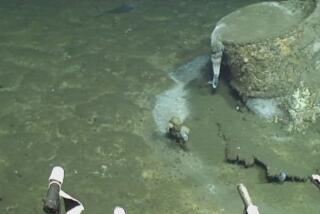Lapses Noted in Port Security
- Share via
WASHINGTON — Forty percent of cargo containers entering U.S. ports are screened for radioactive material, but few containers tagged as potential risks are inspected before they reach the country, according to a congressional report released Thursday.
A three-year study by a subcommittee of the Senate Homeland Security and Governmental Affairs Committee also found that the system used to identify high-risk containers has never been tested or validated.
The study comes after the release this week of a government report four years after the Sept. 11 attacks that said federal undercover investigators were able to enter the United States with enough radioactive material for two dirty bombs.
The subcommittee’s study touted a pilot program at Hong Kong’s port to screen all shipping containers. It said U.S. authorities screened only 5% with X-ray and radiation detectors.
Homeland Security Deputy Secretary Michael P. Jackson told the subcommittee that the Hong Kong project probably would not be the cure-all for gaps in security, which he said would require cooperation among nations and the private sector.
But Jackson said he was optimistic it could lead to a system that would significantly enhance U.S. authorities’ ability to “physically inspect a large number of containers at ports worldwide.”
The subcommittee report cited progress in facing security risks from the 24 million containers that enter the United States annually, with U.S. Customs and Border Protection officials stationed at a number of foreign ports to ease inspections and deployment of more than 700 radiation monitors around the world.
But it said the system to detect high-risk containers depended on unreliable information and too many of those containers reached U.S. ports without being inspected. The report also called the deployment of radiation detection equipment “woefully inadequate.”
More to Read
Sign up for Essential California
The most important California stories and recommendations in your inbox every morning.
You may occasionally receive promotional content from the Los Angeles Times.








